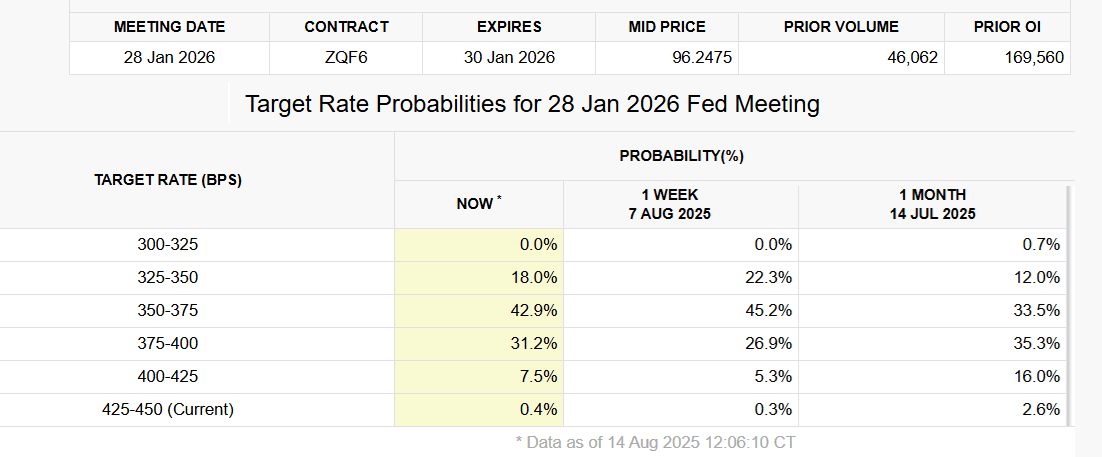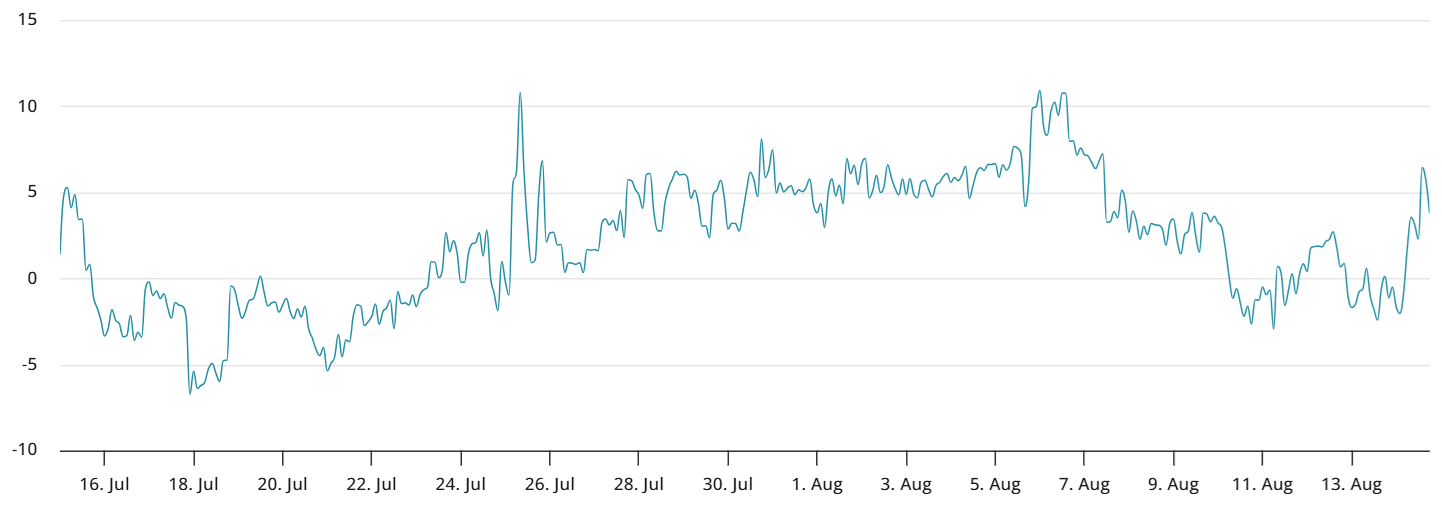Bitcoin experienced a severe shock after reaching an all-time high of $124,089 on Thursday. The drop below $117,500 triggered $227 million in leveraged long liquidations, although derivative indicators were largely unaffected by this move.
Are traders overreacting to U.S. inflation data or is there something in the cryptocurrency market itself preventing prices from surpassing $122,000?

The annual premium for BTC futures has hardly been affected by the $6,630 drop. The indicator is currently at 9%, within the neutral range of 5%–10%.
This suggests that the recent record highs were not driven by excessive leverage and that traders remain relatively calm even as prices fell below $118,000. However, data indicates a lack of confidence in a rally to $150,000.
Could High Inflation Be the Reason Bitcoin is Crashing?
Some might argue that the annual increase of 3.3% in the U.S. Producer Price Index (PPI) in July has made traders more risk-averse, given the higher-than-expected inflation figures. The initial negative reaction reflects the possibility of multiple lower interest rate cuts. However, the S&P 500 eventually wiped out its daily losses, suggesting that Bitcoin's sharp correction may be driven by other factors.

According to CME's FedWatch tool, the probability that the U.S. Federal Reserve (Fed) will cut interest rates to 3.75% or lower by January 2024 is currently at 61%, down from 67% a week earlier. This indicates a decrease in confidence in aggressive monetary easing, a context that usually puts pressure on risk assets like Bitcoin.
Traders appear to have reacted negatively to U.S. Treasury Secretary Scott Bessent's statement that the government has no plans to expand Bitcoin purchases for the Strategic Reserve.
In an interview with Fox Business, Bessent also dismissed the idea of reallocating the proceeds from potential Treasury gold revaluation into Bitcoin. This message contradicts market expectations, as the Executive Order signed by U.S. President Donald Trump in March clearly outlined 'neutral budget strategies to acquire more Bitcoin.'
The Bitcoin Options Market Shows Recovery Potential
To understand whether Bitcoin traders predict prices will continue to decline, we should assess the delta skew of BTC options. Higher costs for put options often signal a bearish market, causing this indicator to exceed the neutral threshold of 6%.

Currently, the Bitcoin options skew is at 3%, indicating a balanced risk outlook, consistent with a healthy market. Importantly, traders have shown resilience even as Bitcoin continuously fails to hold above $120,000. While this does not imply confidence in a sustainable rally, it suggests a lack of concern about prices testing the $110,000 support level.
As U.S. equities have wiped out most of their losses following the latest inflation report, it is likely that Bitcoin traders have taken advantage of the rally to all-time highs to lock in profits. General concerns seem to stem from macroeconomic conditions, especially as U.S. government debt surpasses $37 trillion.
Bitcoin still has good growth potential in 2025, thanks to central bank support in expanding balance sheets to offset budgetary imbalances. However, given the muted activity in the derivatives market, optimism for a spectacular breakout above $120,000 seems limited.
